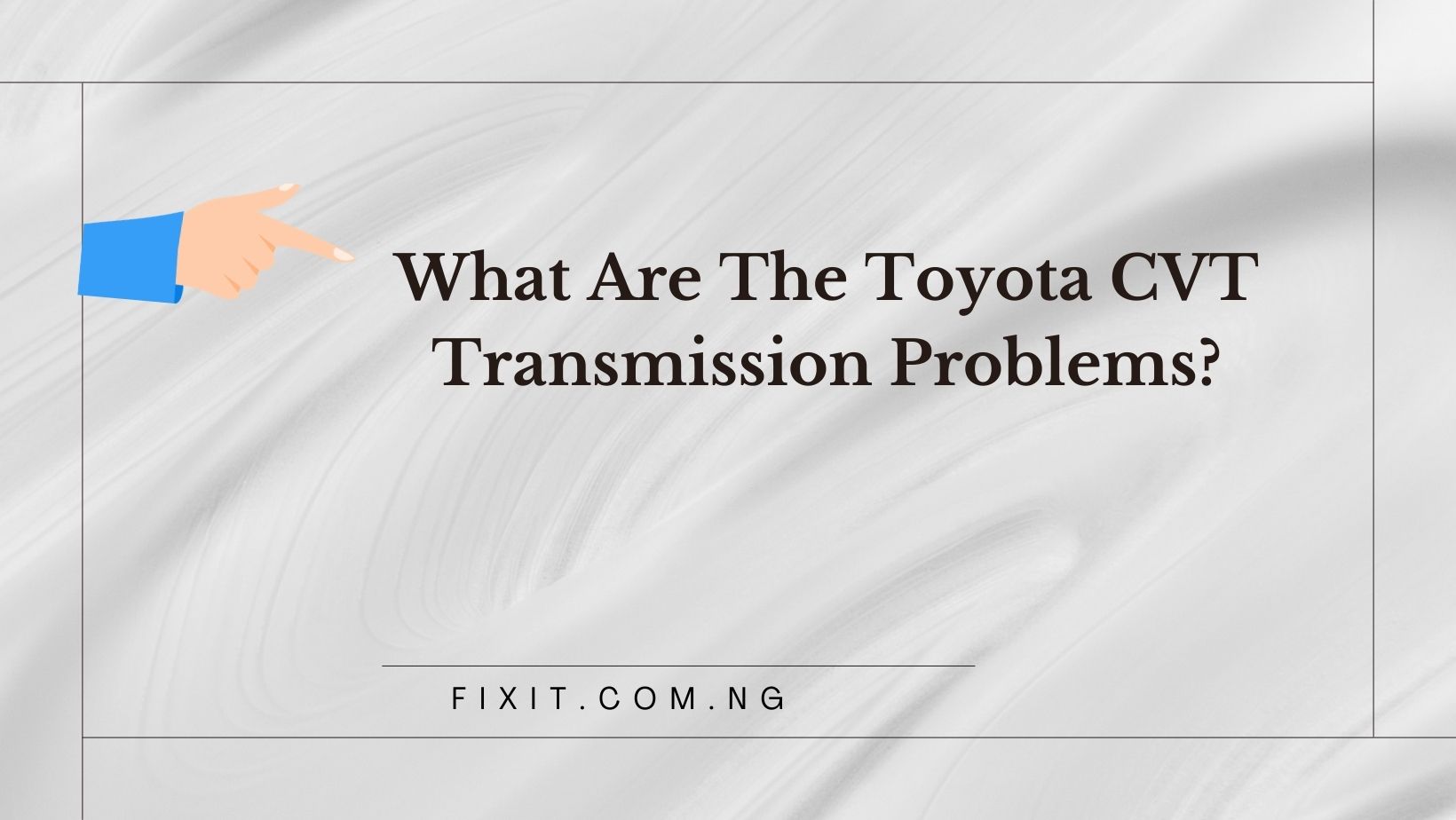Toyota CVT transmission systems enjoy an excellent reliability rating; however, they can occasionally experience certain problems such as overheating, slipping and strange noises.
Overheating may result from driving for too long without stopping at red lights, using incorrect oil, or failing to change it regularly – either of these factors may contribute to overheating and should be monitored and addressed as quickly as possible. Changing oil regularly will help alleviate this issue.
Overheating
Overheating is one of the main problems encountered with Toyota CVT transmissions, as their pulley system differs significantly from that used by manual or automatic transmissions and thus becomes vulnerable to overheating if its cooling systems malfunction.
CVT transmissions can suffer internal damage from aggressive driving habits. Aggressive driving damages all auto components, but especially CVTs with metal belts and pulleys which deteriorate from abrasion and heat. Furthermore, regularly hauling heavy loads will put unnecessary strain on your transmission and shorten its lifespan significantly.
If you notice dark red or red fluid leaking from underneath your vehicle, this could be a telltale sign that the transmission is overheating. On the other hand, bright crimson fluid emanating from its front could indicate coolant leakage from its radiator.
Overheating may be a telltale sign that there’s something amiss with your transmission, but more subtle signs require professional assessment to identify. One indicator may include strange shifts or failure to comply with control inputs; finally, damage to the control module requires professional replacement by a certified mechanic.
Unusual Noises
CVTs utilize a belt-based system rather than traditional gear-based transmissions found on autos or manuals, and therefore their components may wear down more quickly, creating unusual noises such as screeching or clunking when changing gears or staying idle; such unusual sounds indicate your Toyota CVT may need replacing soon.
If your CVT begins making unusual noises, take it immediately to a mechanic who will diagnose and recommend a fix for you. Depending on its severity, they may even recommend that it be replaced altogether.
Toyota CVT transmission issues frequently include uneven acceleration. This occurs because the transmission must switch between different gears in order to accelerate, creating an uncomfortable driving experience and often due to improper maintenance or driving on mismatched tires.
Uneven braking is another Toyota CVT problem, caused by either worn-out belts or damaged sensors. A worn-out belt could result in lack of pressure being applied to the brake pedal, leading to inaccurate readings; damaged sensors could have been damaged due to dirt or contaminants getting into them; it may even have been caused by an ineffective computer program which causes transmission gears to shift excessively.
Slipping
Toyota CVT transmissions utilize a pulley-based system which employs metallic multi-plate chains or belts instead of traditional gear systems to regulate gear ratio. Clamping down with force on these metal bands must be performed to prevent slippage on pulleys which regulate gear ratio; some slippage can be expected from factory settings but excessive slippage could strain rope or chain and lead to its eventual breakage if left untreated.
Initial warning signs that your Toyota CVT may be malfunctioning include screeching or clunking noises when shifting gears or remaining at idle. These sounds are most often caused by metal pulleys or belts deteriorating over time; however, they could also result from aggressive driving habits or poor maintenance practices.
Lack of CVT fluid may also contribute to these noises. Lubrication within transmission fluid aids temperature regulation and ensures all vital elements within the transmission function optimally, so any incompatibilities or inadequate levels may result in frequent disengagements of ratios while driving.
Unsafe or aggressive driving behavior can dramatically shorten the lifespan of every element within a CVT transmission system. Designed primarily for vehicle-friendly users and not motorsport enthusiasts alike, following a proper maintenance schedule and practicing good driving habits should allow you to enjoy your Toyota CVT for many years without any issues or breakdowns.
Control Module Failure
Toyota CVT transmissions are generally reliable; however, they can occasionally develop issues. These could include overheating and control module failure. If this happens to you, contact your dealership as soon as possible to have them repaired.
CVT transmissions utilize belts and pulleys to convert engine rotations to torque, which allows it to shift without using traditional gears and improve acceleration and fuel economy. Furthermore, CVTs come equipped with adjustable gear ratios that can match your driving style perfectly.
Over time, the pulleys and belts that comprise a CVT may become damaged or corroded. This may impede their ability to rotate freely, thus slowing the transmission’s speed. Furthermore, third-party parts not compliant with Toyota instructions could cause its controller to malfunction.
A CVT is an intricate system, and proper maintenance is vital in order for it to run at peak performance. To do this, use the proper amount and frequency of oil changes; drive safely with no heavy loads attached; if any issues do arise with your Toyota’s CVT immediately see a qualified mechanic to prevent further damage to it and other car components.

